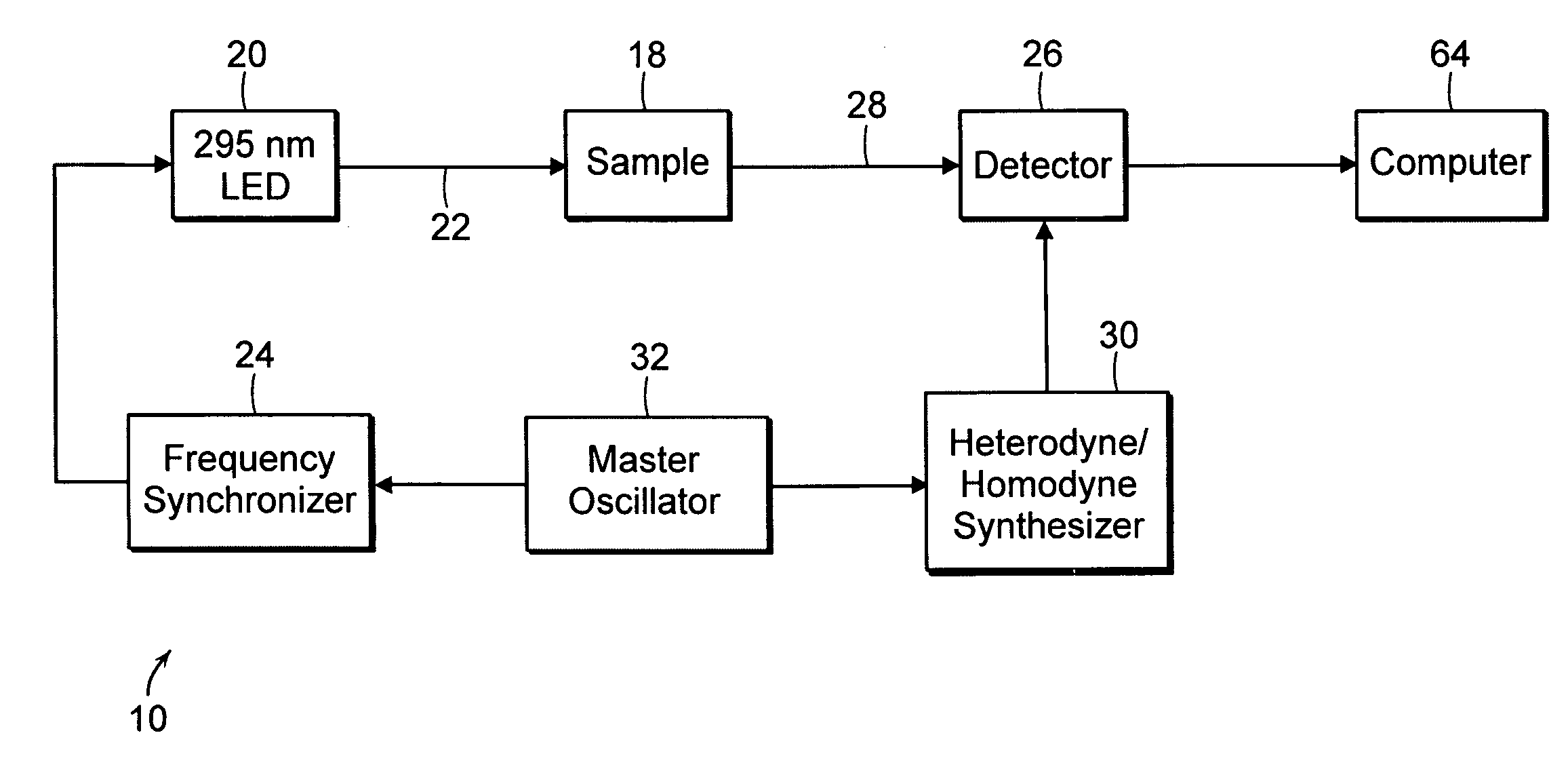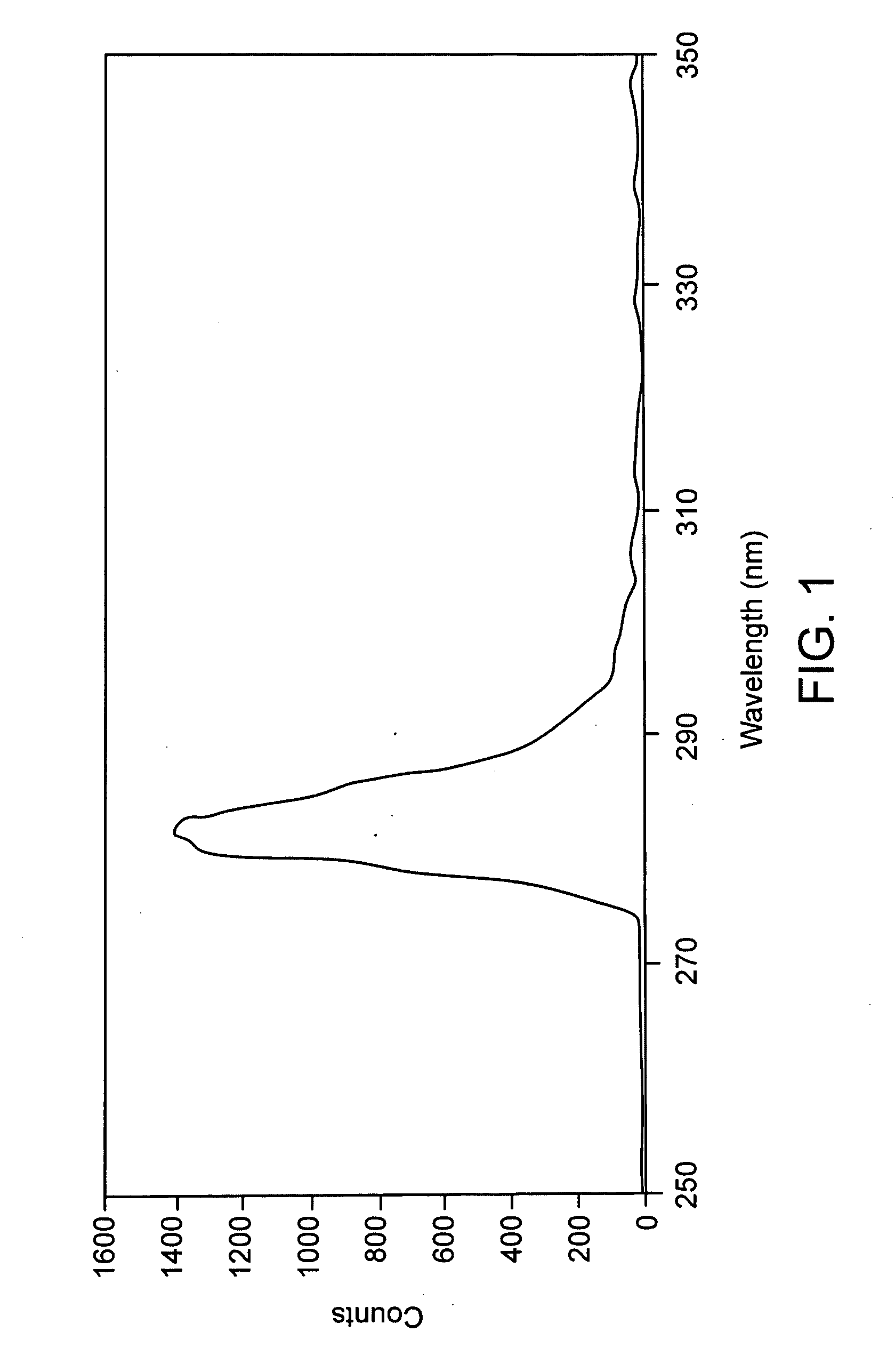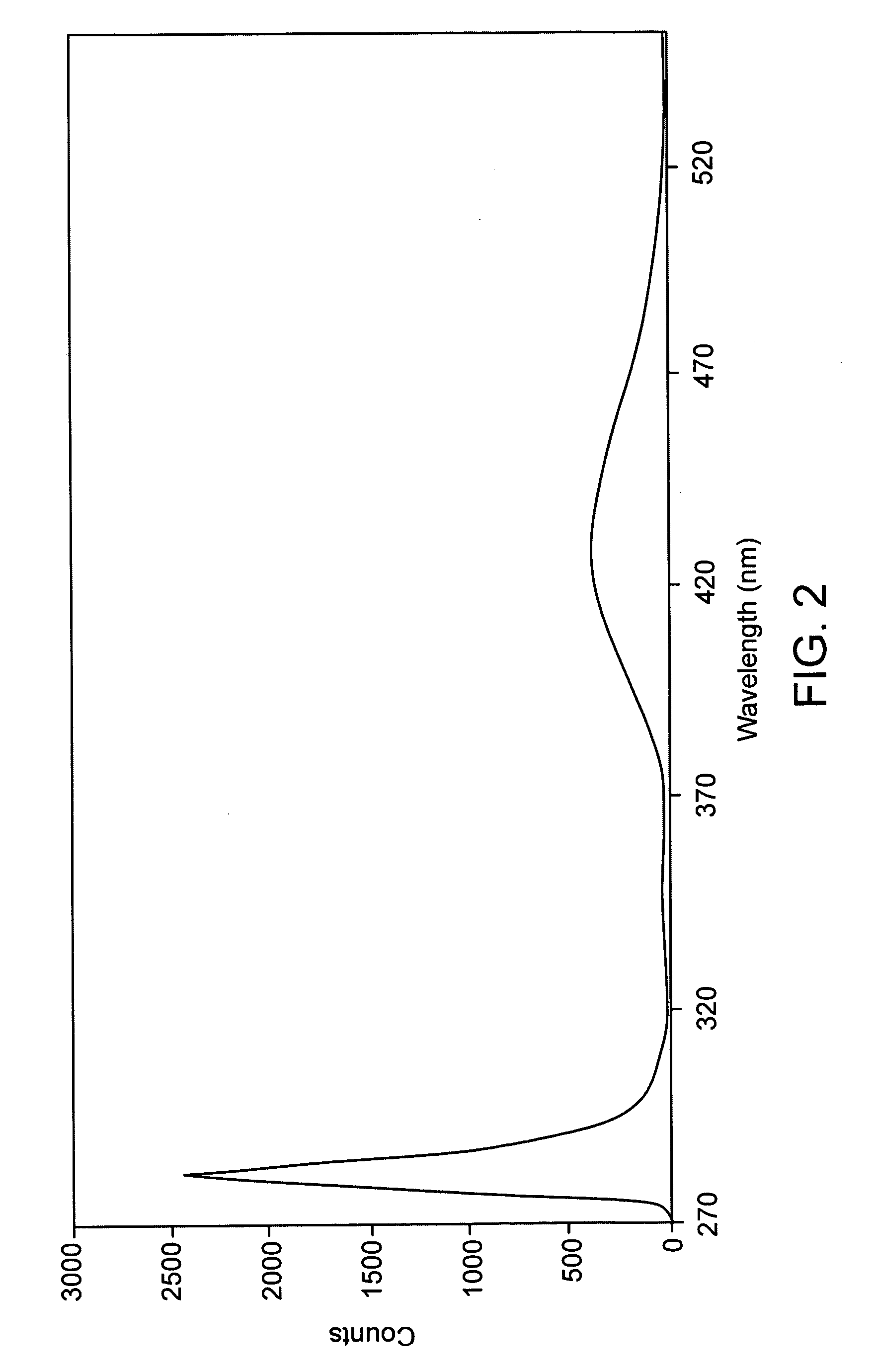Method for both time and frequency domain protein measurements
a technology applied in the field of time and frequency domain single photon counting and frequency domain fluorescence measurements, can solve the problems of limited wavelength interest, inability to modulate to picosecond timeframes, and inability to use the same for protein measurements, so as to increase the attractiveness of inventive methods
- Summary
- Abstract
- Description
- Claims
- Application Information
AI Technical Summary
Benefits of technology
Problems solved by technology
Method used
Image
Examples
Embodiment Construction
[0027] Time-correlated single photon counting (TCSPC) may be used to detect the constituent materials of an excited sample through the detection of single photons emitted by the sample in response to a periodic light excitation signal. In addition to the detection of the photon, its arrival time with respect to any reference excitation signal is also measured.
[0028] When it is desired to measure the fluorescence lifetime of a particular material, the material is excited by a pulse of light, causing it to fluoresce. Such fluorescence typically takes the form of an emitted photon which is emitted in response to and after the excitation pulse. However, the delay between the excitation pulse and the emitted photon is not fixed, but varies. These emitted photons are detected by photodetector, for example using a photomultiplier or micro-channel plate photomultipliers or single photon avalanche photodiodes. Typically, the time during which fluorescent emission may occur is divided into a...
PUM
 Login to View More
Login to View More Abstract
Description
Claims
Application Information
 Login to View More
Login to View More - R&D
- Intellectual Property
- Life Sciences
- Materials
- Tech Scout
- Unparalleled Data Quality
- Higher Quality Content
- 60% Fewer Hallucinations
Browse by: Latest US Patents, China's latest patents, Technical Efficacy Thesaurus, Application Domain, Technology Topic, Popular Technical Reports.
© 2025 PatSnap. All rights reserved.Legal|Privacy policy|Modern Slavery Act Transparency Statement|Sitemap|About US| Contact US: help@patsnap.com



